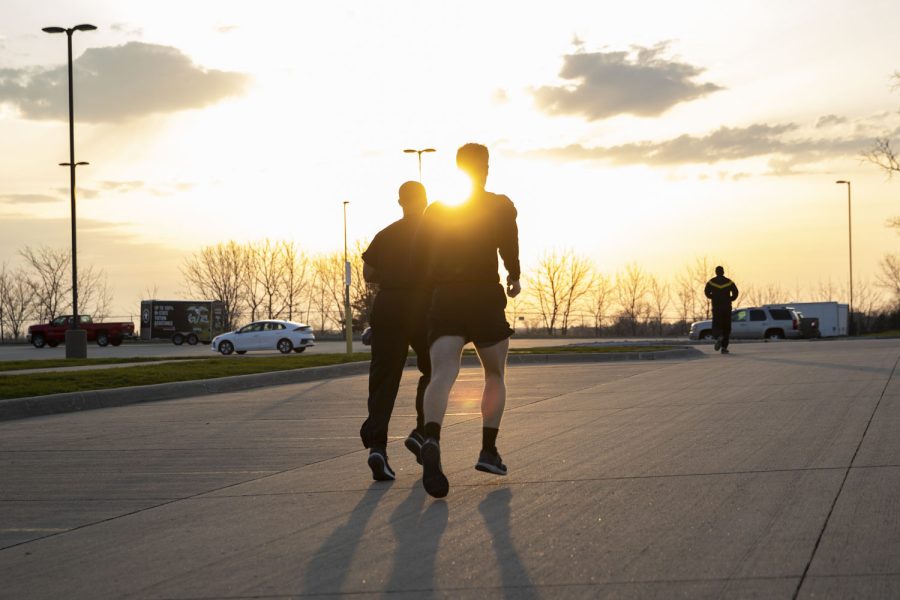For Reserve Officers’ Training Corps cadet and second-year University of Iowa student Kaylynn Lambert, being a woman in the ROTC can be challenging when it comes to meeting height and weight standards.
However, a new collaboration that began in the fall of 2023 between the ROTC program at the university and the university’s Health and Human Physiology department has helped Lambert navigate this challenge by performing a series of body composition tests to measure and meet physical fitness requirements.
Learn more:
Body composition tests help determine what a person’s total body mass is made up of, Lucas Carr, associate professor in the Health and Human Physiology department at the university, said.
The collaboration includes Carr and his students in the Health and Human Physiology department performing body composition tests for ROTC cadets. This has been beneficial for both groups and continues to help cadets understand their bodies on a holistic level.
The test measures how much of the body is made up of fat mass, lean mass, muscle tissue, bone, organs, blood lactate, and other components.
Cadets perform timed sit-ups, push-ups, and a two-mile run that differs for each gender in the Army physical test.
All ROTC cadets and anybody in the community are offered this testing as of fall 2023. Carr said anyone can sign up for a 25-minute time slot where they are tested by Carr’s students.
Carr said these tests are performed inside a BOD POD, which resembles a large egg-shaped device with a window. It uses air displacement to determine the amount of air that is used while a cadet is inside this pod. The BOD POD is located in the Community Health Collaborative at the Iowa Bioscience Innovation Facility.
The BOD POD allows Carr and his team of students to determine body mass and body volume.
“By knowing your body mass and body volume, we can use equations to estimate how much of your body mass is made up of soft tissue and lean tissue,” Carr said.
The results are then given to the cadets in numerical form and Carr’s students provide an interpretation of those numbers and provide feedback on how to reach fitness goals based on the results.
“This helps cadets learn more about their bodies and acquire that personal health information,” Carr said.
Carr added that this collaboration is not only beneficial for the cadets but for his students to gain experience in interpreting what the numbers mean.
Many of Caar’s students are interested in medicine and physical and occupational therapy, and this collaburation allows them to ask important questions.
Lambert said when she was told about the body composition tests, she was scared and excited.
“I always pass the physical fitness test — where we run, do push-ups, and deadlifts — with flying colors, but when it comes to height and weight I always fail,” Lambert said.
Lambert said there is an expectation that if someone is a certain height, they must be a certain weight for women in the Army.
“The BOD POD testing for me was such an easygoing process. Everyone was so nice and my scores were great,” Lambert said.
Matt Bechtel, a second-year at the university and ROTC cadet, had a similar experience with the testing.
“The process was pain-free and simple, and it was something I valued because I was able to learn more about my body in a comfortable setting,” Bechtel said.
Bechtel said these tests help in determining where a cadet falls in terms of body fat so they can adjust and better improve themselves.
Lt. Col. Todd Kuebler, professor of military science at the university, said the motivation behind the collaboration was to teach ROTC cadets ways to optimize their health in both physical performance and nutrition.
“We have physical fitness tests semesterly,” Kuebler said.
Kuebler said the Army gave $1,000 and the UI gave an additional $250 to ROTC help fund the testing.
“I am absolutely over the moon excited to be able to work with Dr. Carr and his students because they are the subject matter experts,” Kuebler said.
Kuebler said he hopes the cadets will walk away from this with a better understanding of themselves.
“When they ultimately become military officers, they can take the skills and knowledge from these tests and impart them upon the soldiers they are ultimately going to lead,” Kuebler said.



